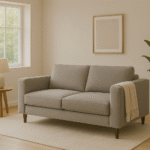Berlin (OTE) – RIMOWA is pleased to continue its tradition of
supporting German
design and emerging talents with the third edition of its eponymous
Design Prize. The annual student competition, supported by leading
German design schools and an esteemed jury, concluded with an awards
ceremony led by Valerie Präkelt at the prestigious Gropius Bau in
Berlin.
Following deliberations by the jury, seven finalists were awarded
a series of prizes.
First place was awarded to Elisabeth Lorenz and Marc Hackländer (
Hochschule für Gestaltung Schwäbisch Gmünd) mentored by Nic Galway
for hottie, a discreetly wearable device designed to empower people
with periods by combining TENS (Transcutaneous Electrical Nerve
Stimulation) technology with adjustable heat therapy. A special
mention went to Niels Cremer and Tom Kemter (Bauhaus-Universität
Weimar) mentored by Pierre Jorge Gonzalez and Judith Haase, for
Standalone. It reimagines the forearm crutch, transforming it from a
limiting aid into an empowering tool, promoting independence and
dignity.
Five other finalist projects were also honoured:
– Jonas Krämer (Folkwang Universität der Künste, Essen) mentored by
Dr. Mahret Ifeoma Kupka.
– Marius Kintzel and Julian Solmsdorff (Bauhaus-Universität Weimar)
mentored by Katharina Janku.
– Nick Geipel (Weißensee Kunsthochschule Berlin) mentored by Niklas
Bildstein Zaar.
– Sophie Ludwig (Hochschule Pforzheim) mentored by Ute Meta Bauer.
– Jan Stackfleth (Hochschule Anhalt) mentored by Mortiz Krueger.
Each of the seven finalist projects received a monetary award.
The winning project was awarded 20.000 Euro, the special mention
received a 10.000 Euro prize, and the projects in third, fourth,
fifth, sixth and seventh place each won 5.000 Euro.
ABOUT RIMOWA
RIMOWA is a global leader in premium luggage. Since 1898, it has
placed quality and innovation at its core to create functional tools
for a lifetime of movement. In the 1920s, RIMOWA introduced aviation-
inspired aluminium into the manufacture of its suitcases, an idea
that revolutionised the industry and resulted in their iconic grooved
aluminium design. In 2000, it pioneered again with the debut of the
first polycarbonate suitcase. In 2017, RIMOWA joined LVMH; three
years later, it launched Never Still, a collection of bags for daily
use that heralded its evolution into a cult mobility brand. In 2023,
RIMOWA introduced an unconditional lifetime guarantee covering all
suitcases purchased from July 25, 2022. Designed and engineered in
Germany, RIMOWA combines a legacy of craftsmanship with the rigours
of modern technology. RIMOWADESIGNPRIZE.com
DISCOVER THE RIMOWA DESIGN PRIZE JURY
– Hugues Bonnet-Masimbert, Chief Executive Officer at RIMOWA [
Honorary]
– Niklas Bildstein Zaar, Co-founder and Creative Director at sub
– Nic Galway, SVP Creative Direction Product Design at adidas AG
– Pierre Jorge Gonzalez & Judith Haase, Founders & Managing Directors
at Gonzalez Haase AAS
– Katharina Janku, CEO at USM Germany
– Moritz Krueger, Founder & Creative Director at MYKITA
– Dr. Mahret Ifeoma Kupka, Curator at Museum Angewandte Kunst,
Frankfurt
– Ute Meta Bauer, Professor at NTU ADM and Principal Research Fellow
at NTU CCA
LEARN MORE ABOUT THE FINALISTS‘ PROJECTS
WINNER
Marc Hackländer and Elisabeth Lorenz from the Hochschule für
Gestaltung Schwäbisch Gmünd, presented their concept hottie ,
mentored by Nic Galway . Hottie is a discreetly wearable device
designed to empower people with periods, addressing menstrual
discomfort and combining TENS (Transcutaneous Electrical Nerve
Stimulation) technology with adjustable heat therapy. Their design
effectively relieves period pain, allowing users to stay active and
comfortable. The two young designers aim to improve user’s well-being
and challenge menstrual stigma.
SPECIAL MENTION
From the Bauhaus-Universität Weimar is Standalone , designed by
Tom Kemter and Niels Cremer and mentored by Pierre Jorge Gonzalez and
Judith Haase . It reimagines the forearm crutch, transforming it from
a limiting aid into an empowering tool, promoting independence and
dignity. Standalone is a sleek design made from high-quality
materials. The innovative fold-out legs enable the crutch to stand
independently, freeing up users‘ hands. The design transforms the
traditional crutch into an ergonomical, user-friendly and
customizable companion.
Compath , created by Jonas Krämer from the Folkwang Universität
der Künste, Essen under the mentorship of Dr. Mahret Ifeoma Kupka, is
a wearable solution designed to support user’s autonomy around
mobility throughout different stages of dementia. Compath offers
early and continuous support through an intuitive device that
provides guidance, reminders, and emergency assistance. The designer
hopes to compassionately offer both caregivers and patients a sense
of safety and control. Users are encouraged to stay active, while
having the peace of mind that Compath will safely guide them home if
needed.
Marius Kintzel and Julian Solmsdorff from the Bauhaus-Universität
Weimar introduced their concept TONBO , a reimagining of the
traditional hand truck. Mentored by Katharina Janku , TONBO is made
from aluminium and recycled carbon fibers to achieve a lighter, more
functional, and aesthetically pleasing design. Inspired by bionic
principles, it is ergonomically designed with replaceable handles and
12-inch air tires, ensuring smooth navigation across stairs and
uneven terrain. Versatile for a range of needs, TONBO can carry loads
up to 100kg.
Layers , designed by Nick Geipel from the Weißensee
Kunsthochschule Berlin and mentored by Niklas Bildstein Zaar , is a
bench system that promotes human-cantered design in public spaces.
Inspired by urban projects championing inclusive spaces, it creates
communal, socially sustainable areas that encourage interaction.
Layers is designed with purposefulness and adaptability in mind. Its
efficient assembly, and locally sourced materials, such as wood and
surplus concrete blocks, ensure sustainability while encouraging for
a more inclusive, community-focused urban planning.
Sophie Ludwig from the Hochschule Pforzheim presented Memento ,
mentored by Ute Meta Bauer . Memento is a digital memory object that
honours the legacies of loved ones by securely storing and displaying
curated memories. The design is carefully considered, with a gentle
glowing display and minimalistic marble base that blends seamlessly
into living spaces. Through its app, users can create a digital
legacy with photos, videos, and music, which is then transferred to
the device for easy access. Memento combines elegance with technology
for a thoughtful and communal approach to digital remembrance.
The cAir Pin , designed by Jan Stackfleth from the Hochschule
Anhalt and mentored by Moritz Krueger , addresses the global air
pollution crisis with a portable device that provides real -timeair
quality monitoring and empowers users to make informed decisions
based on their currentenvironment. The cAir Pin can be easily
connected to smartphone apps, alerting users whenunsafe levels of air
pollution are measured, educating them about air pollution and its
effects onrespiratory health, and providing personalised tips. The
cAir Pin actively contributes to global airquality maps and supports
sustainable mobility efforts.
Digital press kit: http://www.ots.at/pressemappe/DE179760/aom






